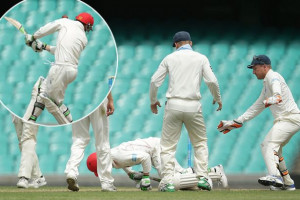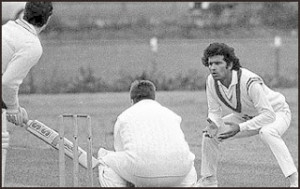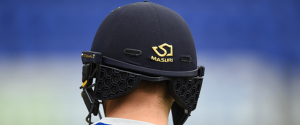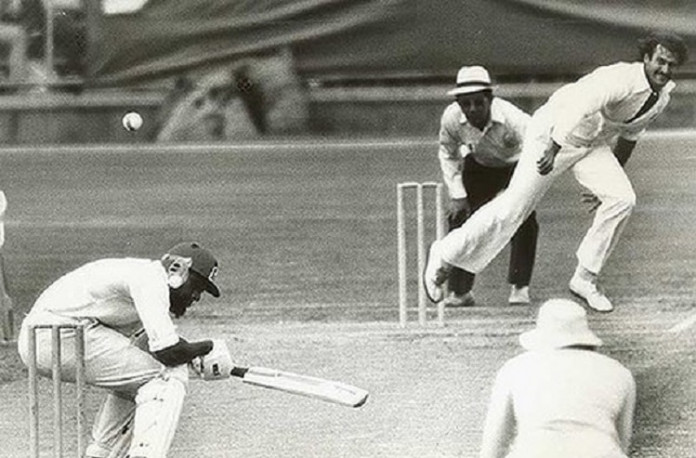The tragic and untimely death of Phil Hughes, who took a fatal hit on the back of his neck whilst wearing a helmet while playing in an Australian state championship match, brought into focus again the importance of protective head gear for cricketers.
Cricket had been considered a relatively safe game, until the English adopted bodyline tactics against Australia and the West Indies and Australian pace bowlers resorted to hurling intimidating bouncers at batsman in the 1970s.
There have been some instances where players and even Umpires have been injured on the field of play; the instance that comes most vividly to my mind being the life threatening head injury the Indian captain Nariman Contractor sustained from a bouncer bowled by West Indian paceman Charlie Griffith in a Test match played in the Caribbean, which led to his retirement from the game.

Some cricket fatalities due to heart failure resulting from over exertion on the field are on record as regards Andy Ducat and Wilfred Slack. Abdul Aziz’s demise was due to being struck by a ball over the heart. Raman Lamba of India was struck on the head while fielding close to the bat and succumbed to his injury on the way to hospital. In Sri Lanka, Malik Alles, son of the renowned educationist R.T. Alles, had an untimely demise when he was hit on the head while fielding at practice in school. Umpire Alcwyn Jenkins who was struck on the head by a throw of a fielder also lost his life. In 1970 George Summer of England and in 2013 Darryn Randal of South Africa both died after being hit on the head while batting.
In years gone by, players in Ceylon wore hats or caps made from hard board which was brown in colour that gave minimum protection to batsmen. This type of hat was aptly named “Gal Thoppiya”. A photograph of the legendary Australian batsman Sir Donald Bradman wearing this type of hat adorns a wall of the P. Saravanamuttu Stadium in Borella. In the mid-1960s the ‘box hat’ was replaced by the White cloth hat as it was thought to be more fashionable but it only gave protection from the sun.
It is a credit to the batsmen of that era that casualties were minimal. This could be attributed to their quick reaction to short pitched bowling to avoid the deliveries that could cause injury. Since players of today have the protection of a helmet, their reactions are slower and they tend to take more chances in trying to hook the ball. As a result we observe batsmen getting hit on the helmet more frequently.

Batsmen the world over have used many protective devices to save themselves from being injured by lethal intimidating bouncers. In the 1970s the legendary Indian opening batsman Sunil Gavaskar and the English Captain Mike Brearly wore skull caps under their floppy hats while batting to guard against serious injury. Dennis Amiss and Tony Grieg wore ones that resembled motor cycle helmets.
In 1979 a West Indies side toured Sri Lanka and in the match played in Galle, Bandula Warnapura was hit on the head by a Sylvester Clarke bouncer. He suffered from severe concussion and headaches and had to miss playing cricket for several months. In the match played at the Sinhalese Sports Club grounds, Sunil Wettimuny was hit on the head by a bouncer from Malcolm Marshall and I recall the anguish we felt as team mates watching him fall on the pitch and convulse. Fortunately, Sunil came through this ordeal, but like Warnapura, had to miss cricket for a while due to this blow.

At this point I thought it prudent to have some sort of protective device turned out to protect my head while batting. I wore a device similar to a cycling helmet under my floppy hat which gave me more confidence. However a local scribe found out about my improvised helmet and called me a coward for wearing it. In1975, I had scored a 100 against the visiting West Indies side that had pacemen Vanburn Holder, Keith Boyce and Bernard Julian minus any protective cap and this scribe thought I should do so again regardless of this new danger. A few months later Graham Yallop, the Australian left handed batsman, wore the first proper batting helmet without it having to be concealed.
Over the years helmets have been improved to offer very good protection not only to batsmen but to wicket keepers and close in fielders as well. From junior level, a helmet is an essential feature of any cricketers’ equipment and has vastly reduced the number of serious injuries. Modern helmets have contributed in no small measure for the greater good of players and the game.













